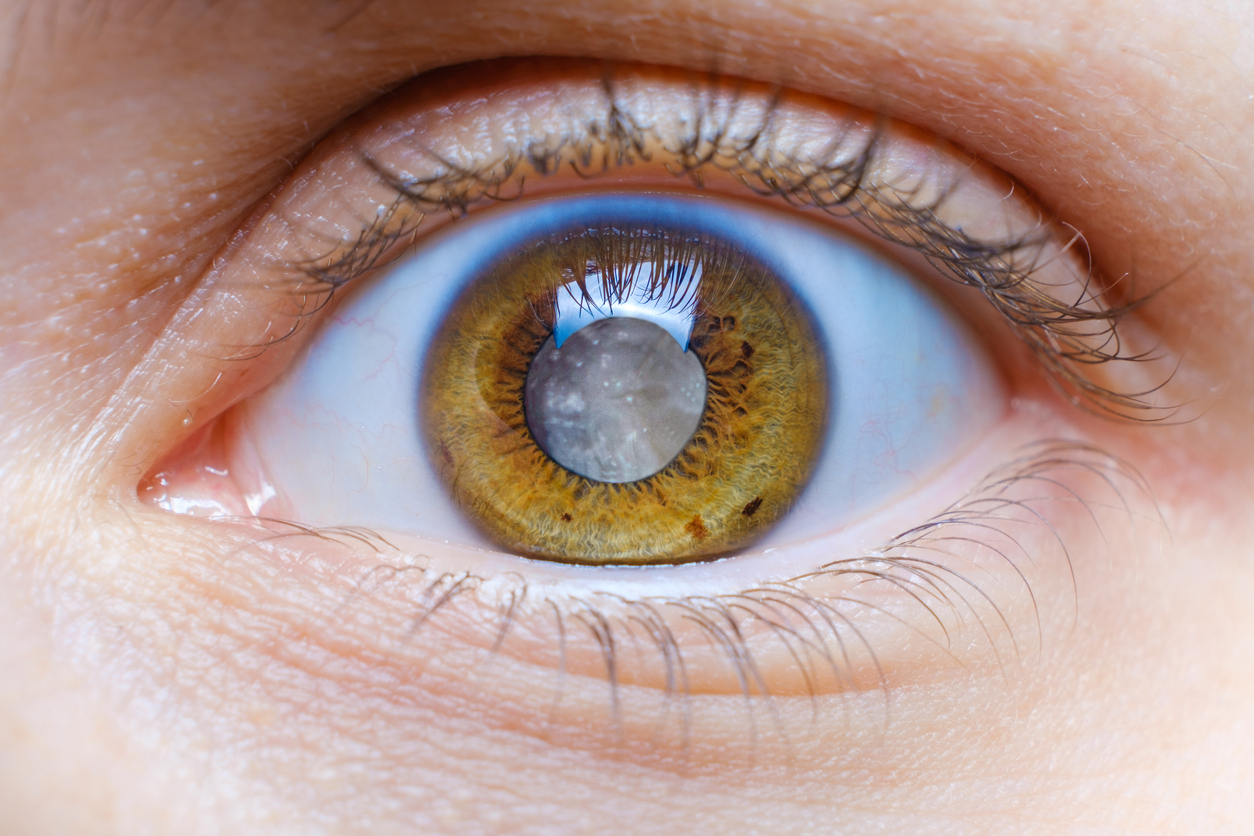Dealing with cataracts can prove a challenging experience. As the eye’s lens clouds, patients can notice significant changes in their vision. While cataract surgery can restore clearer, crisper vision, many patients still would like to know the causes of this condition. So, why do cataracts develop?
Why Do Cataracts Develop?
A cataract occurs when the eye’s lens develops cloudy areas. This can be localized to one part of the lens or occur across the entire structure. In either case, this cloudiness can significantly impair vision. In fact, many patients may think they need glasses or LASIK when they really only need cataract surgery.
Age
Aging is not easy on the eyes or on any part of the body. As the eyes age, one of the main internal changes that takes place involves the proteins of the lens breaking down. As they break down, they can clump together, making it more difficult for light to pass through. Thus, the appearance of cloudiness that is associated with cataracts.
For most people, this process starts around age 40. However, its severity at this point can vary. Some people may hardly notice any changes, while other individuals will develop stark and sudden cloudiness. Genetics puts some people at greater risk of developing age-related cataracts than others.
Injury
Eye damage can also lead to cataracts. Using power tools and playing contact sports tend to increase your risk of having an eye injury. Not all eye injuries lead to cataracts, but a damaged lens will undoubtedly have more issues than a healthy one. Even if an eye injury does not lead to cataracts, it might cause other issues. In any situation where your eyes could take a hit, we recommend taking measures to protect your eyes.
Health Conditions
Some health conditions, such as diabetes, can eventually lead to cataracts. Attentive management of your condition can help slow the process, though. We recommend working closely with your doctor to identify any risk factors based on your medical history.
Preventative Measures for Cataracts
No solution will guarantee that you do not develop cataracts. However, being mindful of your eye health and lifestyle factors can help ameliorate the risk. The development of cataracts will often involve an interplay of multiple factors. By reducing your risk in the areas within your control, you can give your eyes better chances of staying clear.
Avoid Smoking & Alcohol
We know you know it, but it bears repeating. Smoking is bad for you in almost every conceivable way. In addition to putting you at risk for small cell lung cancer (and many other cancers), it can negatively affect your vision. Increasing your risk for cataracts is but one example of how smoking does this.
Alcohol can also increase your risk for cataracts. Research has shown there is no safe level of alcohol consumption. The more alcohol someone consumes, the more their risk for cataracts (and many other conditions) goes up.
Protect Your Eyes
If you use power tools or play contact sports, using protective eyewear will immensely benefit you. You certainly should protect your eyes when using any kind of power tool. Your vision is simply too valuable to leave unguarded.
Additionally, wearing sunglasses during days of higher UV exposure will work in your favor. Check the UV index before going outside. If it ranks at a three or higher, we recommend considering UV-protective sunglasses.
Fuel Your Eyes With Nutrients
Just like any part of the body, your eyes need the right set of vitamins and minerals to do their job. Research shows that vitamins A, C, and E all provide benefits for eye health, so grab some extra fruit and vegetables during your next trip to the grocery store.
Cataracts Are Not the End of the Story
In this age of constant technical and medical advancements, cataracts do not spell the end of your vision. Several solutions for lens replacement exist, allowing patients to reclaim clear and vibrant vision. Techniques for vision correction continue to be created, each with stunning results available for patients.
One such advancement is the Light Adjustable Lens. This artificial lens replaces your natural clouded lens and has the additional benefit that it can be adjusted after your surgery. The adjustment process is entirely noninvasive and involves only UV light.
If you are developing cataracts, do not give up hope. With the right expert, you can rediscover the joy of clear sight.
Visit a Top-Rated Vision Expert
At his laser eye surgery center, Dr. Michael Merkley provides stunning vision improvements through advanced cataract surgery and laser procedures.

